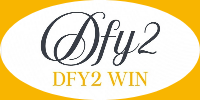Sales Funnel Development: Key Components to Include
Ever wondered why some businesses seem to effortlessly convert prospects into customers while others struggle? The secret often lies in the effectiveness of their sales funnel. In today’s post, we’ll walk you through the essential components of a sales funnel and how you can optimize each stage to boost your business’s success. Let’s dive in! 🚀
Table of Contents
1. Introduction to Sales Funnels
2. Awareness: The Top of the Funnel 🌟
3. Interest: Capturing Attention 🎯
4. Decision: Persuading Prospects 💡
5. Action: Sealing the Deal 🏆
6. Conclusion
7. FAQs
Introduction to Sales Funnels
Before we get into the nitty-gritty details, let’s start with the basics. A sales funnel is a visual representation of the customer’s journey, illustrating the path from the first interaction to the final purchase. Think of it as a roadmap guiding your potential customers through the process of getting to know, like, and trust your business.
Awareness: The Top of the Funnel 🌟
The journey begins here. At the top of the funnel, your goal is to generate awareness about your brand. This stage is all about attracting potential customers, and there are several ways to do this:
– Content Marketing: Create valuable, engaging content like blog posts, videos, and infographics. Not only does this help establish your brand as an authority, but it also improves your search engine rankings. 📈
– Social Media: Utilize platforms like Facebook, Instagram, and LinkedIn to reach a broader audience. Engage with your community and share content that resonates. 👍
– SEO: Optimize your website with relevant keywords to ensure you’re easily discoverable by search engines. 🔍
Interest: Capturing Attention 🎯
Once you’ve caught their eye, it’s time to keep them interested. This stage is crucial as it determines whether your prospects will move further down the funnel or not.
– Email Marketing: Offer a freebie, like an e-book or a discount, in exchange for their email address. It’s a great way to nurture relationships and provide value over time. 📬
– Webinars: Host informative sessions that address your audience’s pain points and demonstrate your expertise. This builds trust and positions you as a go-to resource. 📚
Decision: Persuading Prospects 💡
Here’s where things get exciting! At the decision stage, prospects are evaluating their options and considering a purchase.
– Case Studies: Showcase success stories from past clients to illustrate the effectiveness of your products or services. People love real-world results! 📝
– Product Demos: Allow potential customers to experience your offering firsthand, either through a free trial or a live demonstration. It’s all about showing, not just telling. 👀
Action: Sealing the Deal 🏆
The moment of truth! The action stage is where prospects become paying customers. Make it as easy as possible for them to say “yes.”
– Clear CTAs: Ensure your calls-to-action are compelling and straightforward. Guide your prospects on what to do next. 🖱️
– Secure Checkout: Provide a seamless and secure payment process to avoid any last-minute hiccups. Trust is key! 🔒
Conclusion
Developing an effective sales funnel is about understanding your customer’s journey and optimizing each stage to meet their needs. By focusing on awareness, interest, decision, and action, you’ll create a streamlined path that guides prospects smoothly from first contact to loyal customer. Happy funnel building! 🎉
FAQs
Q1: What is a sales funnel, and why is it important?
A sales funnel is a model that depicts the journey a customer takes from awareness to purchase. It’s crucial because it helps businesses understand and optimize the customer acquisition process.
Q2: How can I improve the interest stage of my sales funnel?
To enhance the interest stage, focus on building relationships through email marketing, hosting webinars, and providing valuable content that addresses your audience’s needs.
Q3: What tools can I use to track my sales funnel’s performance?
There are several tools available, such as Google Analytics, HubSpot, and Salesforce, which help monitor and analyze the performance of your sales funnel.
Q4: How do I ensure my calls-to-action are effective?
Make sure your CTAs are clear, concise, and direct. Use action-oriented language and place them strategically throughout your content.
Q5: What’s the most challenging part of developing a sales funnel?
The most challenging aspect can be ensuring all stages are aligned and seamlessly guide the customer without friction. Regularly reviewing and optimizing each stage is key to overcoming this challenge.

